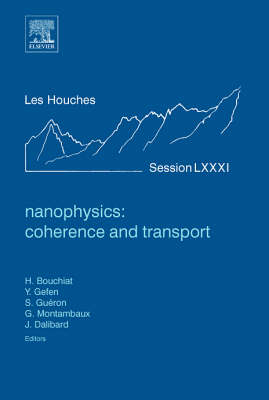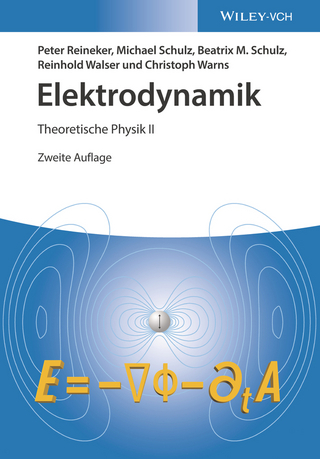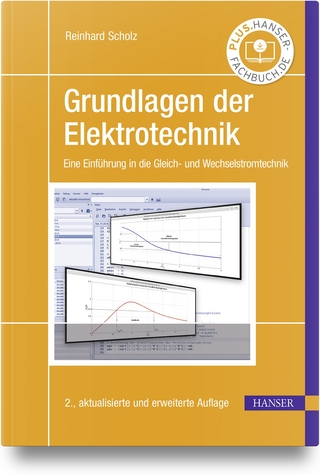
Nanophysics: Coherence and Transport
Elsevier Science Ltd (Verlag)
978-0-444-52054-8 (ISBN)
- Titel ist leider vergriffen;
keine Neuauflage - Artikel merken
The developments of nanofabrication in the past years have enabled the design of electronic systems that exhibit spectacular signatures of quantum coherence. Nanofabricated quantum wires and dots containing a small number of electrons are ideal experimental playgrounds for probing electron-electron interactions and their interplay with disorder. Going down to even smaller scales, molecules such as carbon nanotubes, fullerenes or hydrogen molecules can now be inserted in nanocircuits. Measurements of transport through a single chain of atoms have been performed as well. Much progress has also been made in the design and fabrication of superconducting and hybrid nanostructures, be they normal/superconductor or ferromagnetic/superconductor. Quantum coherence is then no longer that of individual electronic states, but rather that of a superconducting wavefunction of a macroscopic number of Cooper pairs condensed in the same quantum mechanical state. Beyond the study of linear response regime, the physics of non-equilibrium transport (including non-linear transport, rectification of a high frequency electric field as well as shot noise) has received much attention, with significant experimental and theoretical insights. All these quantities exhibit very specific signatures of the quantum nature of transport, which cannot be obtained from basic conductance measurements.
Basic concepts and analytical tools needed to understand this new physics are presented in a series of theoretical fundamental courses, in parallel with more phenomenological ones where physics is discussed in a less formal way and illustrated by many experiments.
Hélène Bouchiat research activity since 1988 is devoted to coherent transport in mesoscopic systems and molecular wires. Her main contributions are related to persistent currents and ac conductance in mesoscopic rings and more recently proximity induced and intrinsic superconductivity in carbon nanotubes. Hélène Bouchiat research activity since 1988 is devoted to coherent transport in mesoscopic systems and molecular wires. Her main contributions are related to persistent currents and ac conductance in mesoscopic rings and more recently proximity induced and intrinsic superconductivity in carbon nanotubes. Gilles Montambaux works on the theory of quantum transport in disordered and interacting electronic systems. His main contributions concern persistent currents, energy levels statistics, quantum transport in networks, decoherence effects. He has published a book on the mesoscopic physics of electrons and photons. Jean Dalibard works in the field of atomic physics and quantum optics. His recent activities is centered on the physics of cold quantum gases, in particular Bose-Einstein condensation.
Lecturers / Seminar speakers / Participants / Preface
Course 1. Fundamental aspects of electron correlations and quantum transport in one-dimensional systems (Dmitrii L. Maslov)
Seminar 1. Impurity in the Tomonaga-Luttinger model:
A functional integral approach (I.V. Lerner
and I.V. Yurkevich)
Course 2. Novel phenomena in double layer twodimensional electron systems (J.P. Eisenstein)
Course 3. Many–body theory of non–equilibrium
systems (Alex Kamenev)
Course 4. Non-linear quantum coherence effects in
driven mesoscopic systems (V.E. Kravtsov)
Course 5. Noise in mesoscopic physics (T. Martin)
Seminar 2. Higher moments of noise (Bertrand Reulet)
Course 6. Electron subgap transport in hybrid systems combining superconductors with normal or
ferromagnetic metals (F.W.J. Hekking)
Course 7. Low-temperature transport through a quantum dot (Leonid I. Glazman and Michael Pustilnik)
Seminar 3. Transport through quantum point contacts (Yigal Meir)
Course 8. Transport at the atomic scale: Atomic and
molecular contacts (A. Levy Yeyati and J.M. van Ruitenbeek)
Course 9. Solid State Quantum Bit Circuits (Daniel Estève and Denis Vion)
Abstracts of seminars presented at the School
| Erscheint lt. Verlag | 2.8.2005 |
|---|---|
| Reihe/Serie | Les Houches |
| Verlagsort | Oxford |
| Sprache | englisch |
| Maße | 152 x 229 mm |
| Gewicht | 1150 g |
| Themenwelt | Naturwissenschaften ► Physik / Astronomie ► Elektrodynamik |
| ISBN-10 | 0-444-52054-6 / 0444520546 |
| ISBN-13 | 978-0-444-52054-8 / 9780444520548 |
| Zustand | Neuware |
| Haben Sie eine Frage zum Produkt? |
aus dem Bereich


